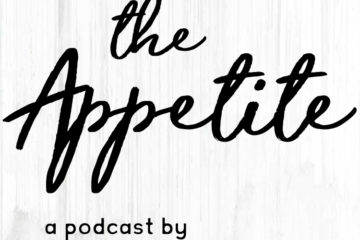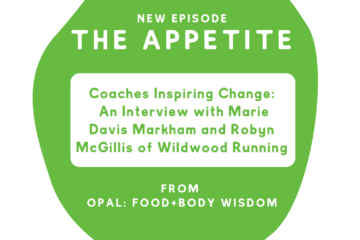[column width=”1/1″ last=”true” title=”” title_type=”single” animation=”none” implicit=”true”]
When I was six or seven, I got my first diary. It had pink lined pages and a picture of Hello Kitty on the front. I still remember how eager I was to start putting things down in that book- I had just barely learned how to write sentences, but I had things to say. When my parents recently moved, I rediscovered that book along with the twenty or so others that I filled up until I moved away and had to start storing my own stuff. I spent hours pouring over my own recorded history, remembering things I’d forgotten, laughing at my younger self and the silly things she cared about. Without a doubt, those journals are my most prized possessions – not only because they are entertaining, but because, in some way, I feel like certain parts of my history wouldn’t exist without them. Certainly nobody remembers that fight my best friend and I had in 5th grade, or how I processed the events of 9/11 as a 16-year-old high school student.
I’ve long held the belief that identity is shaped through story. In some way, I’ve always known that my desire to record both the trivial and seminal events of my life was actually about claiming my sense of self. It was this telling of the stories that made them real, and the identification of which stories were worthy of telling was what allowed me to feel a like I had a stake in becoming who I am. These stories were not told with any kind of real audience in mind; but I suppose I’ve always imagined my future-self reflecting back on my life, which is what I’ve now found myself doing.
When I was a graduate student in marriage and family therapy, I was introduced to the therapeutic approach called Narrative Therapy, and it resonated strongly with my perspectives on storytelling and reality. This way of practicing therapy is based on the idea that there is no singular version of reality that is truer than another. Instead, there are a series of concurrent storylines at any given time in a person’s life. Some of these stories are congruent with our hopes and dreams for ourselves, and others represent the problems we wish would go away. People often feel stuck and seek therapy when the problematic stories and their effects (symptoms) become so dominant that they feel like the only reality, and they crowd out any alternatives that would feel preferable.
Often times different storylines may seem to be in opposition with one another, but the idea in narrative therapy is that they exist alongside one another without one being more true or real than another. A person who struggles with anorexia may also have experienced moments of delight in her relationship with food. Someone dealing with crippling anxiety may feel actually feel somewhat calm when they are in nature or talking to their best friend. So often, we discount the times when the problem is less present, or fail to include these stories when we talk about ourselves or our lives. We all draw conclusions about ourselves, yet often the evidence for these conclusions is incomplete.
What I have learned in my experience as a therapist is that there is always more than one storyline happening – even if we can’t see it. What would be possible if we started searching for evidence to support alternative storylines? Would we find that there were things we’d left out or missed? Narrative therapy is about making more room for the preferable storylines to gain legitimacy as we start paying attention and finding an audience for these stories.
Several years ago, I worked with a young woman who had dropped out of college and was feeling incredibly hopeless when she thought of her future. She had been dealing with the effects of bulimia and panic disorder, and was growing increasingly unsure of her ability to be in relationship with others or in any kind of structured life activity like school or work. The stories of isolation and loss of control were becoming more and more prominent in her life, and she felt pretty helpless as a result.
After entering treatment, she told me countless details of her history with her eating disorder and anxiety. Every week, she provided more evidence and complexity to this story of helplessness, and this always seemed to make her feel worse and more stuck. Eventually, we started talking a little about her life before the bulimia and panic, and she mentioned in an offhand way that she had been a surfer from a young age. In fact, prior to entering treatment, she had continued to surf, even when her problems were at their worst. This seemed really important to me, so I asked her why she hadn’t told me about it. She told me that she hadn’t even thought of it because it didn’t seem related to the problems she was having.
I asked that she indulge my curiosity and tell me more about her surfing. Once we started talking about what it represented for her, she was able to locate alternative storylines about tenacity, connection to a community, courage, and trust in her own instincts that existed in the history with surfing. As time went on, she started finding evidence of these stories in her life outside of surfing: there was the time she shared a piece of her writing with another client, there were the painful secrets she gave voice to in therapy, and there was the way she started setting boundaries with her mom. Alone, these events may have seemed trivial. She was, in fact, still struggling daily with the effects of bulimia and panic. But when linked together as an alternate truth about her life that was grounded in a story of tenacity and connection, these events developed real meaning for her and marked the beginning of hope. That’s why I love narrative work: it encourages pausing and considering information that we would usually discard as random or meaningless, and so often, this is where the roots of change start taking hold.
This particular client, and many of my clients since then, have found that an important part of their recovery involves finding an audience for their stories – both the stories of their problems and alternative stories that represent their preferred ways of living. This woman found it meaningful to write about her experiences and share her writing with important people in her life. She also started a new Instagram account just to highlight her surfing experiences with the intention of deepening her identity as a powerful and connected young woman. While it may seem self-congratulatory to reflect on success or spend time documenting it and sharing it, I actually believe that this work is just as important as reflecting on and telling the story of struggle. If we don’t do this part, those stories of success or overcoming obstacles more often than not get lost or forgotten.
Aside from therapy, it seems that there are more platforms than ever available to meet the need to tell our stories. Most of us are participating in this already without even realizing it. We may not all post intimate details of our lives on social media, but so many people, particularly young people, are telling some sort of story about themselves online. In fact, 93% of 12-17 year olds have some sort of online presence. As a therapist, I have witnessed both the opportunity and the hazard of using this public audience. Most importantly, it seems that the anonymity provided online may in some cases allow people to step into more vulnerability and openness. The opposite is, of course, also true.
I encourage my clients to tread lightly in the world of online audiences, and to be mindful in what pieces of themselves they are willing to open up to online feedback. With this said, there are so many opportunities available to be heard, seen, and experienced supportively by online communities. I have learned that when done thoughtfully, it is possible for a person to practice telling a new or more hopeful story about themselves and have it reflected back in a way that helps to ground the new story in reality. When a new story is just starting to take hold, any experience like this can make a major impact.
We will all find ways to tell our stories – I believe that this process is part of being human. Some of us will do this with a wider audience, some will reflect in solitude, or in the presence of a trusted loved one or therapist. Sometimes, we tell stories in unspoken ways, perhaps with our behavior or our appearance. In the end, I don’t know that it matters how we do it so long as we can find a way to see ourselves mirrored back. This helps us put the moments of our lives together coherently and make sense of our experiences and identities. It allows us locate different story lines, and decide which ones we’d like to cultivate further and which ones we’d like to prune. Most people who come to therapy are surprised to discover the presence of alternative stories in their own past, present, or future. As a therapist, I am humbled and honored by the opportunity to be a mirror, an audience, and a collaborator in this work.
I’ll leave you with the following questions to guide your own exploration:
What ways have you found to tell your story?
What different storylines can you identify in your own life?
Have you ever experienced a storyline that seemed to dominate how you see yourself or your life?
Contributed by Haley Brink, LMFT
[/column]



0 Comments